Three species of pheasant are on the British List but they differ dramatically in their status. One is super-abundant and barely merits a second glance from most birders, one is very rare and localised and the other is probably already extinct here. For various reasons, therefore, the identification of pheasants is a rarely discussed topic. This article looks at all three species, not just the obvious gaudy males but also the much drabber and more similar females.
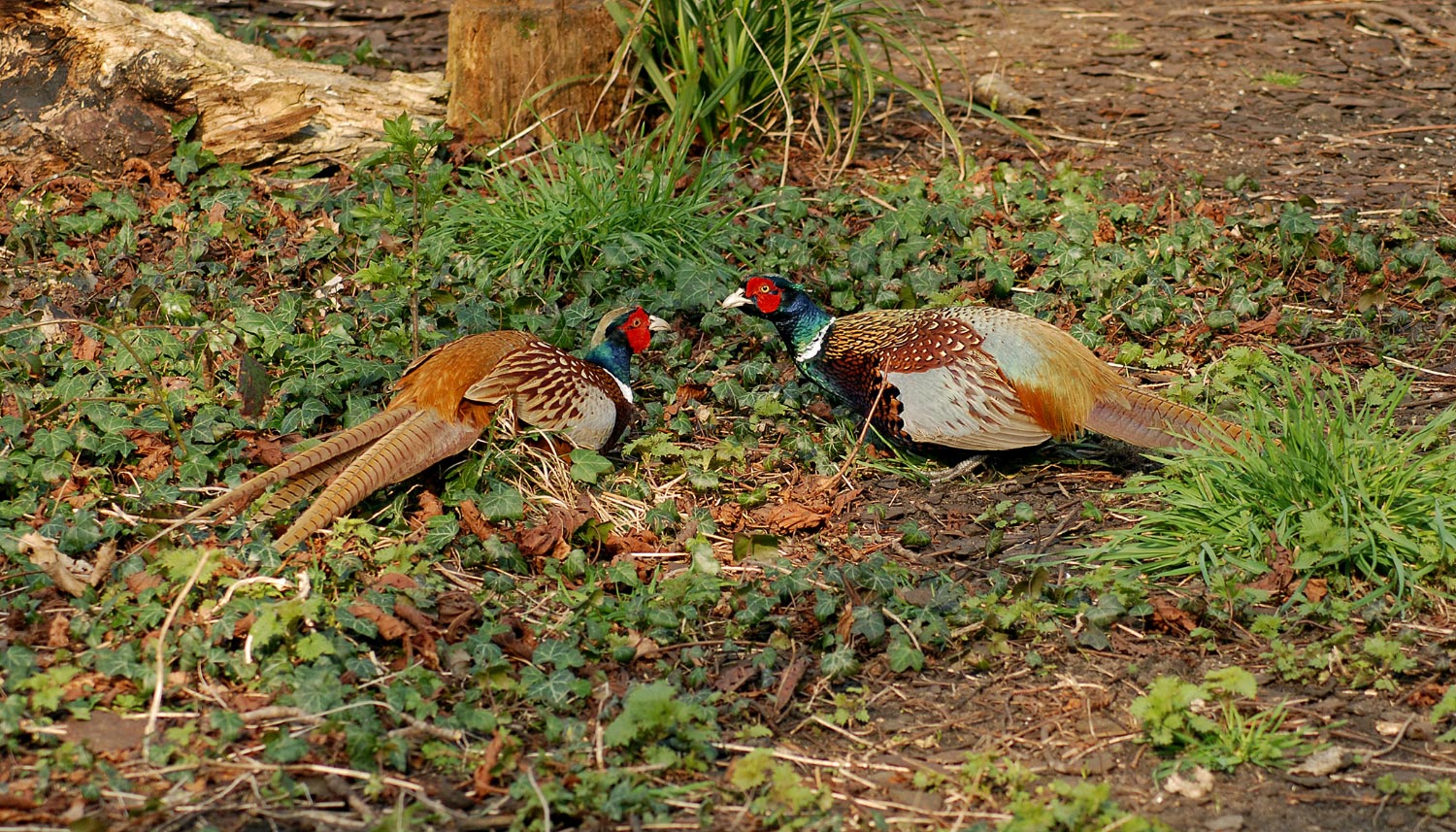
Common Pheasant (Crosby, Lancashire, 25 March 2007). Pheasants come with lots of political baggage but, irrespective of the merits or otherwise of their presence in the British countryside, this is an undeniably attractive species, brightening up our woodland and farmland landscape (Steve Young / www.birdsonfilm.com).
Common Pheasant
Common Pheasant is on Category C1 of the British List ('naturalised introduced species'). In its home range, it occurs from the Black Sea to eastern Asia and was – according to some sources – introduced into Britain by the Romans, although most authors attribute the first introductions to the Normans in the 11th century. It is now a ubiquitous inhabitant of our countryside (apart from the far north-west of Scotland), intensively reared and released for commercial recreational shooting, to the tune of perhaps 12 million birds annually. Its presence here defines the management of much of the British landscape, although it has no place in our natural avifauna.
Males are distinctive with their burnt orange bodies, green heads and necks and bare red skin around the eye. The species has around 30 subspecies across its natural range, with many British releases being of the western form colchicus or the more eastern torquatus. At least six subspecies have been released here, however, and today's British population represents a hybrid swarm of forms, with a bewildering variety of male plumages evident, though many retain the white collar typical of torquatus. A particularly distinctive and locally common form is the so-called 'tenebrosus' type, which is dark green and superficially resembles Green Pheasant from Japan. Another common type shows an unusually pale back – the result of partial leucism.
Females are brown and drab by comparison. They are, however, attractive birds, long-tailed of course but with dark-centred upperpart feathers with neat 'scaly' pale fringes and prominent 'arrowhead' flank markings.
Golden Pheasant
This species is a shy and elusive inhabitant of lush temperate and subtropical forests in south-west China. It was introduced to Britain from the late 19th century at a number of sites including south-west Scotland, North Wales, the Norfolk and Suffolk Breckland, the Hampshire and Sussex Downs, Dorset and Tresco, Scilly.
Some of these populations became self-sustaining, enabling its admission to Category C1 of the BOU's British list. For a while it did well, most notably in the dry pinewoods of East Anglia, but in recent years it has disappeared from many areas and is in steep decline even in its Breckland stronghold. Most people now see the species in the Wolferton and Sandringham area of West Norfolk. The British population may no longer be truly self-sustaining and it is quite feasible that the species may now die out in the wild here. It can also occasionally be encountered away from its traditional locations thanks to escapes or deliberate releases, although such birds often prove to be Golden x Lady Amherst's Pheasant hybrids.
Male Golden Pheasant is truly spectacular and unmistakable, draped in red and yellow, with a golden 'shawl' and a long brownish-gold tail. Interestingly, although normal males are red-throated, a dark-throated (so-called 'obscurus') plumage has been noted in the British population (particularly in West Norfolk but also recorded elsewhere). This was once thought to be the probable result of hybridisation with Lady Amherst's Pheasant, but is now considered more likely to be a consequence of inbreeding within an increasingly isolated population, as the same plumage type can develop in captive-bred birds.
Females are both elusive and increasingly rare so the chances of seeing one in Britain are shrinking fast. They are brown and therefore superficially similar to Common Pheasant, but are smaller and have a 'ghosting' of the male nape 'shawl'. The plumage is a bright pale brown and heavily barred (including on the belly). The orbital skin around the eye is limited in extent and a yellowish-pink colour, while the legs are yellowish.
Lady Amherst's Pheasant
This close relative of Golden Pheasant is also a shy inhabitant of forests in south-west China. Also introduced to Britain in the 19th century, Lady Amherst's Pheasant occurred mainly in Bedfordshire and Buckinghamshire as well as at a number of other sites in southern England and North Wales. The former population thrived, enabling the species to be admitted to Category C1 of the British List. Numbers peaked in the 1970s, but it has recently suffered a catastrophic decline and is now considered to be potentially or actually extinct in the wild in Britain. It is now listed as a Category C6 species (that is, those "formerly placed in C1 whose naturalised populations are either no longer self-sustaining or are considered extinct"). As with Golden Pheasant, the occasional escaped or deliberately released bird can be encountered, though these are often hybrids.
Discussing the identification of the species is therefore perhaps a little academic but the males are striking indeed, glossy blue-black and white with a golden rump, prominent white nape 'shawl' and a long black-and-white barred tail with red sides at its base.
Females closely resemble Golden Pheasant but are darker and richer brown and the barring does not extend to the belly, which is plain. The orbital skin is extensive and grey in colour and the legs are grey also.
Other possibilities
Not all escaped or released 'exotic' pheasants are Golden or Lady Amherst's – there are other options too, the most frequent being the beautiful Reeves'sand Silver Pheasants. A chance encounter with either would bring a welcome flash of colour to a British woodland.
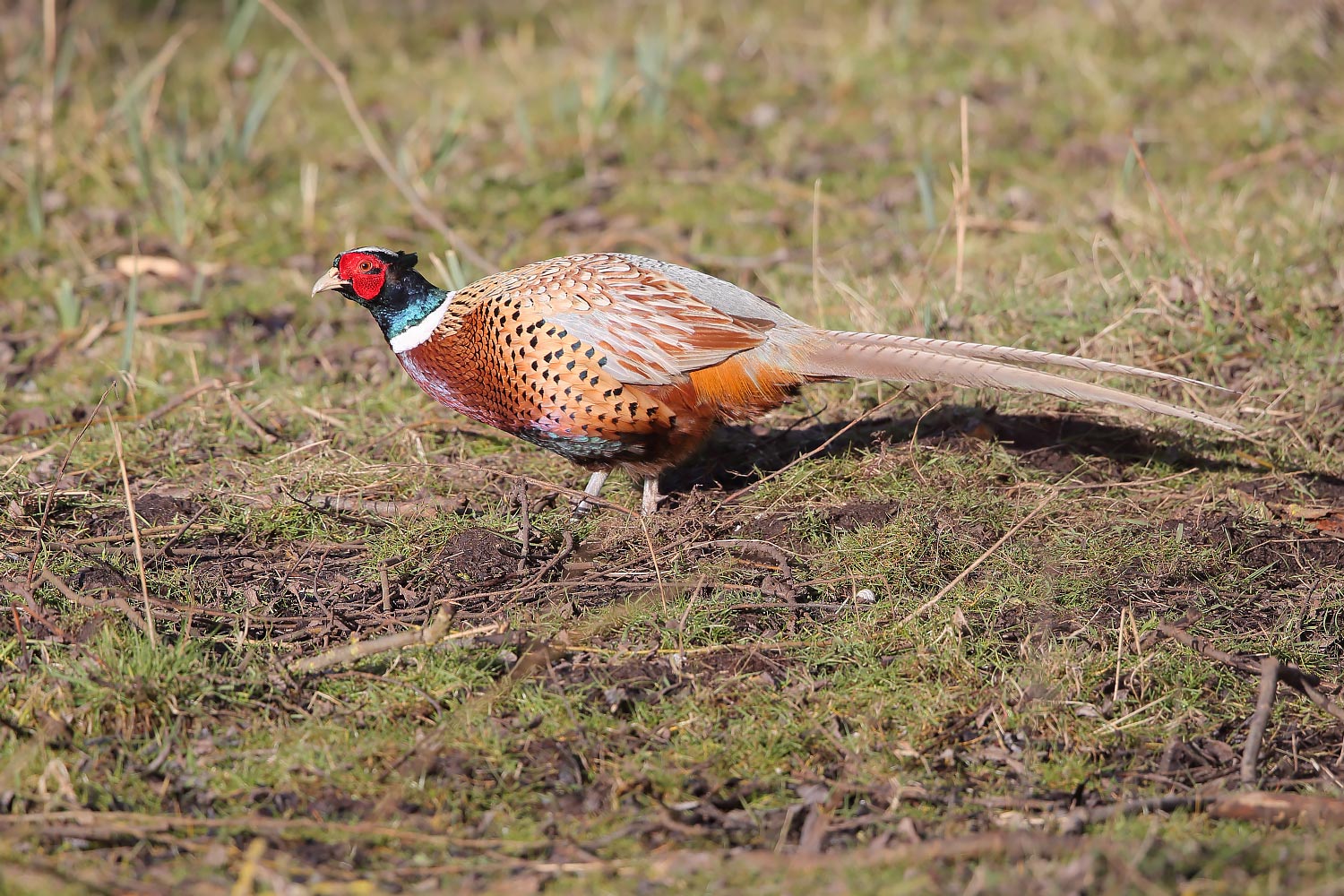
Common Pheasant (Thetford, Norfolk, 1 March 2015). Although the genetic history of our Pheasants is now pretty confused, this is a typical male showing the standard combination of burnished copper body, pale greenish rump, glossy green head and neck and bright shining red wattles. The white neck ring is typical of torquatus-types whose native range is in China (James Lowen /www.jameslowen.com).
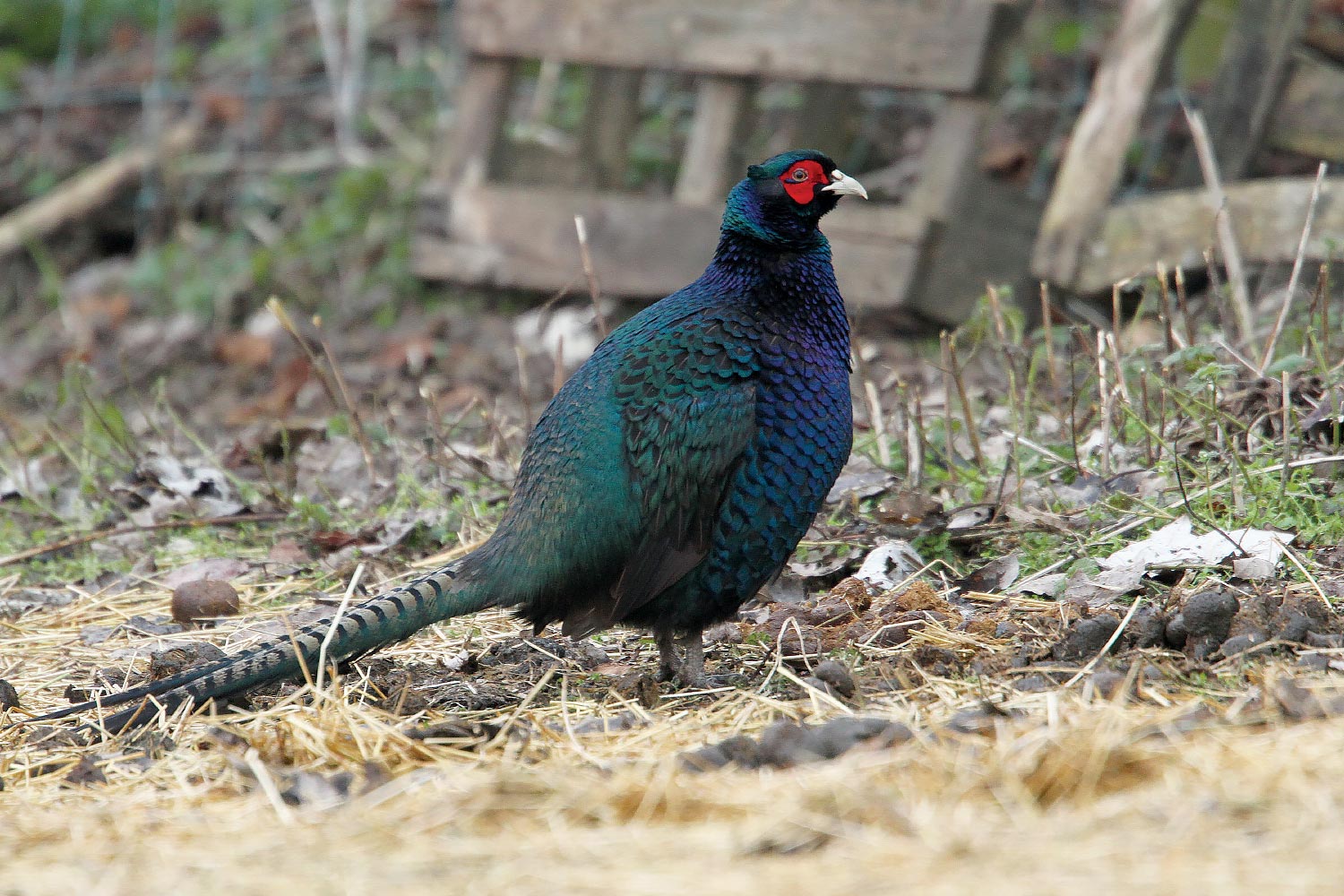
Common Pheasant (Fishers Green, Essex, 17 January 2013). This strangely dark tenebrosus-type variant of Common Pheasant is patchily distributed although locally common. With its sombre green hues shot through with blue and purple, it is a striking bird indeed and has some resemblance to Japanese Green Pheasant (Dominic Mitchell / www.birdingetc.com).
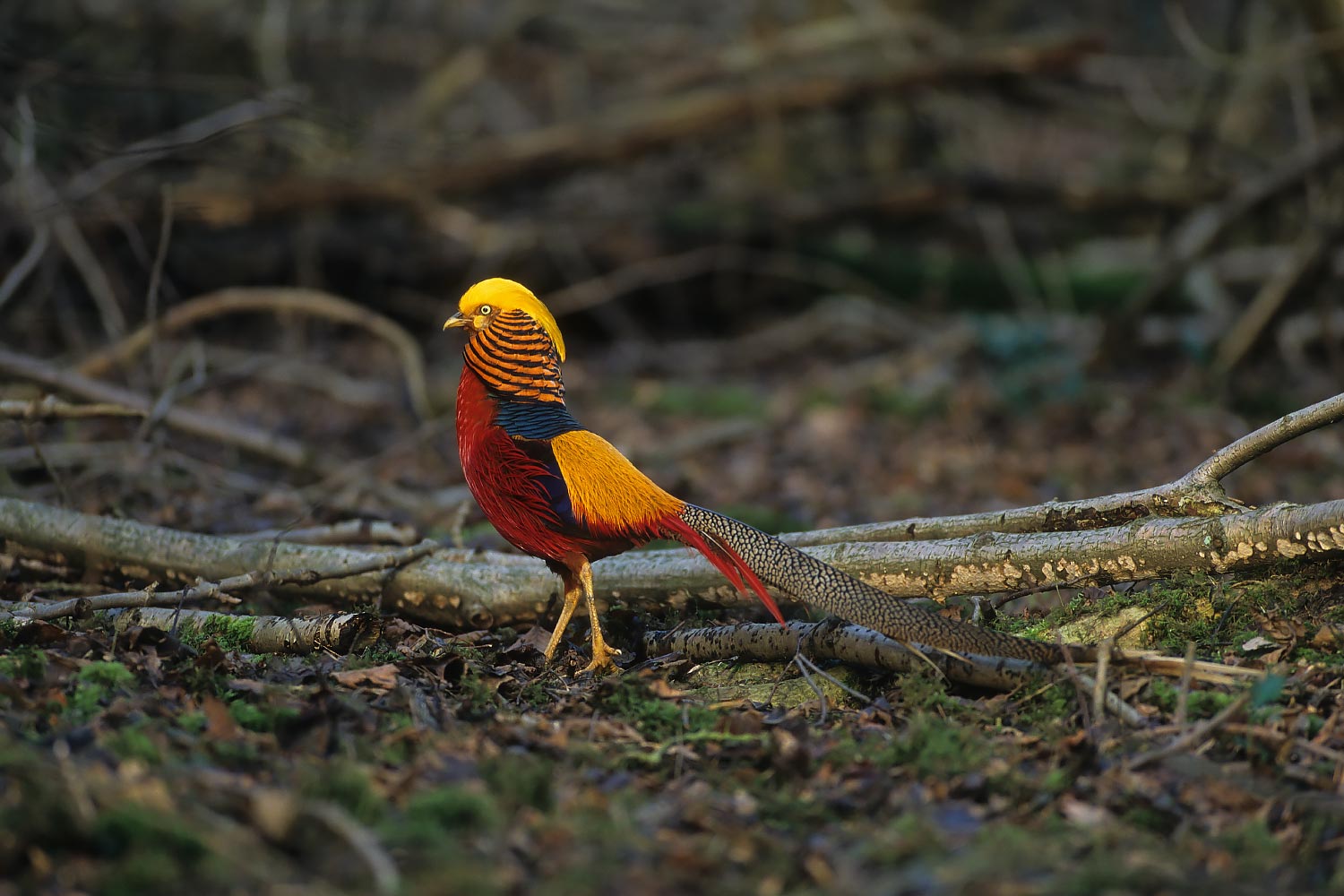 Golden Pheasant (Wayland Wood, Norfolk, February 1997). Male Golden Pheasant has to be the brightest bird on the British list. With its golden mane and rump and shocking red underparts, it positively gleams if caught out in the sunshine. Despite the finery of its plumage, however, it can be surprisingly – and frustratingly – difficult to see as it slinks away through dark forest understorey (Robin Chittenden).
Golden Pheasant (Wayland Wood, Norfolk, February 1997). Male Golden Pheasant has to be the brightest bird on the British list. With its golden mane and rump and shocking red underparts, it positively gleams if caught out in the sunshine. Despite the finery of its plumage, however, it can be surprisingly – and frustratingly – difficult to see as it slinks away through dark forest understorey (Robin Chittenden).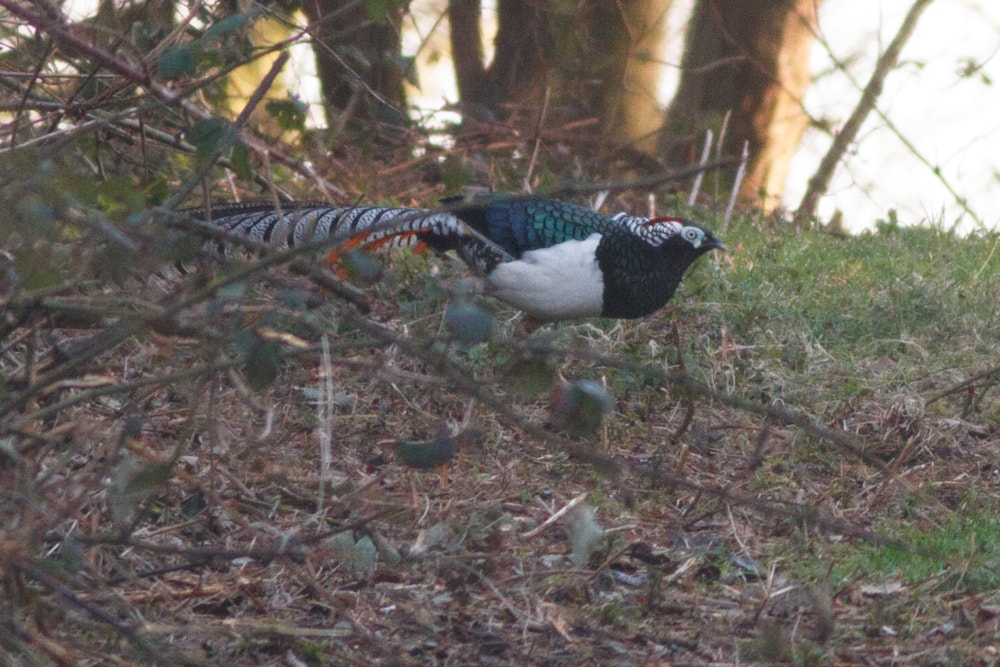
Lady Amherst's Pheasant (Lidlington, Bedfordshire, 11 March 2015). Almost as colourful is the bizarrely-plumaged Lady Amherst's Pheasant – a riot of white and dark glossy green with reddish highlights in the crown, belly and tail base. The precise colour scheme is difficult to take in on a quick view but the flowing white nape shawl, finely laced with black, normally catches the eye (Josh Jones / www.joshrjones.com).
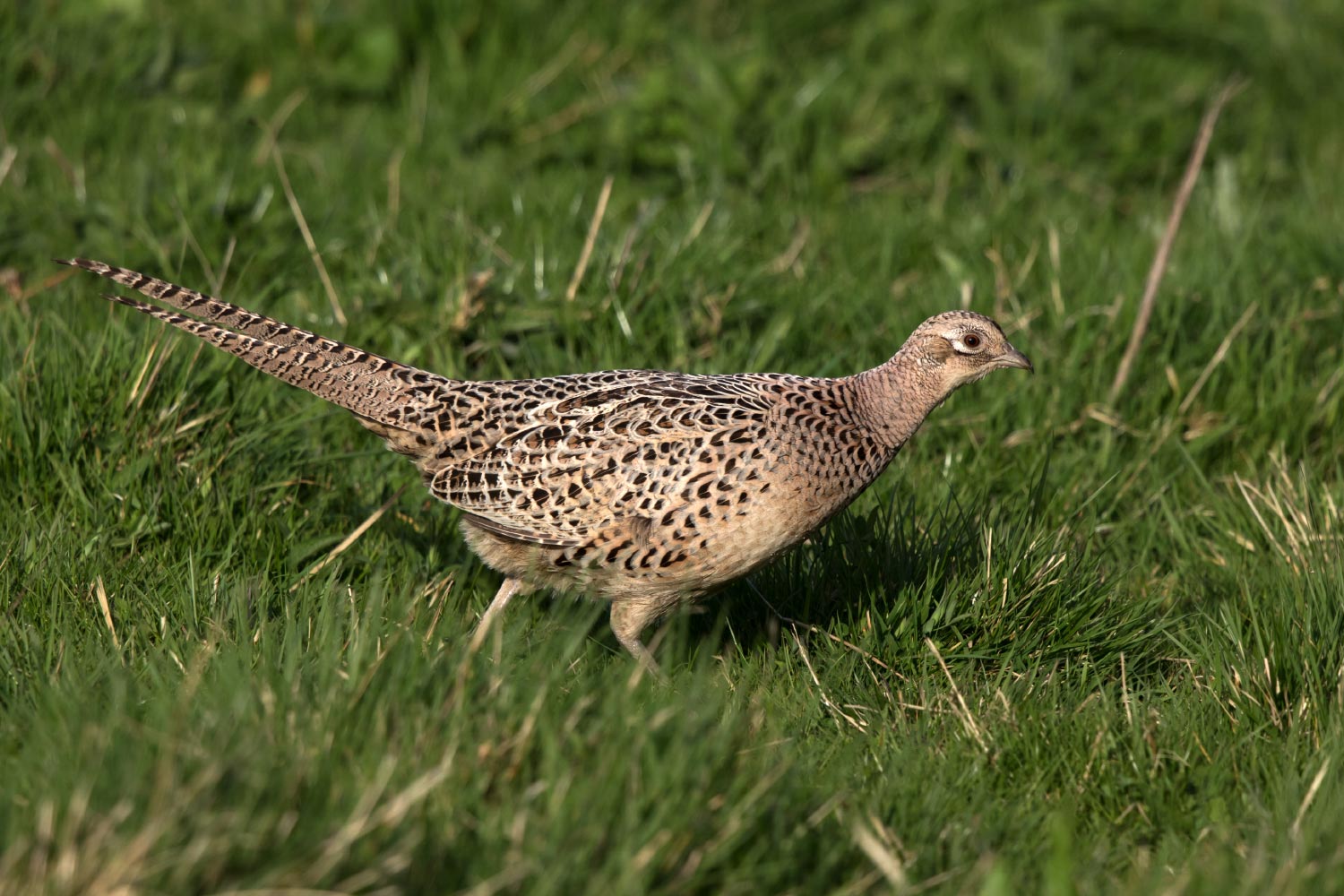
Common Pheasant (Rutland, 2011). Game bird females are generally brown and drab compared with the resplendent hues of the males, and Common Pheasant is no exception to this rule. This female bird is typically pale straw-coloured with dark, neatly defined feather centres and pale feather fringes forming a crisply scaled pattern (Tony Clarke).
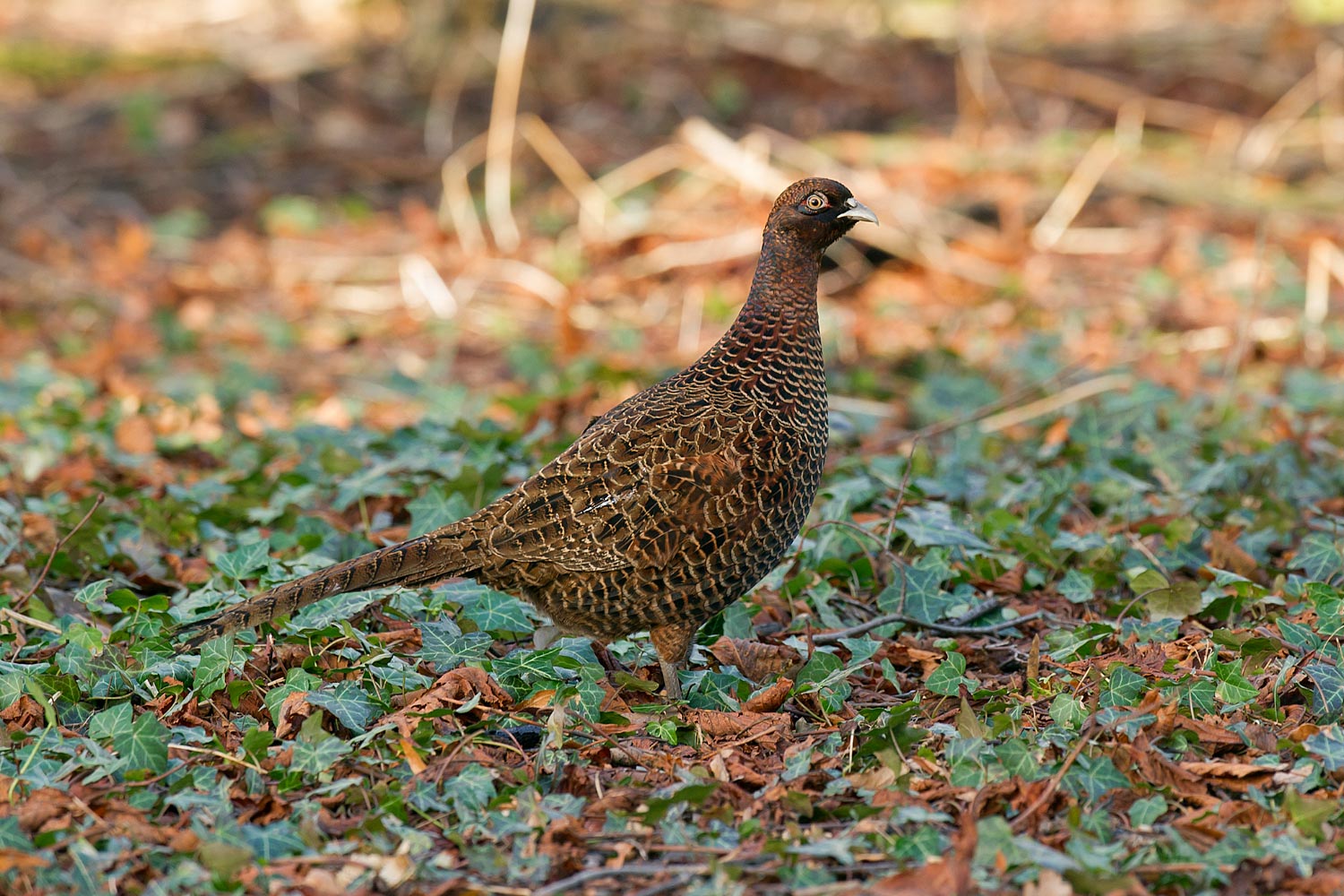
Common Pheasant (Crosby, Lancashire, 12 February 2011). Common Pheasant is hugely variable, this being particularly obvious in the gaudy males. However, females can vary in their appearance too, this bird being strikingly dark, although the overall scaled appearance is still apparent (Steve Young / www.birdsonfilm.com).
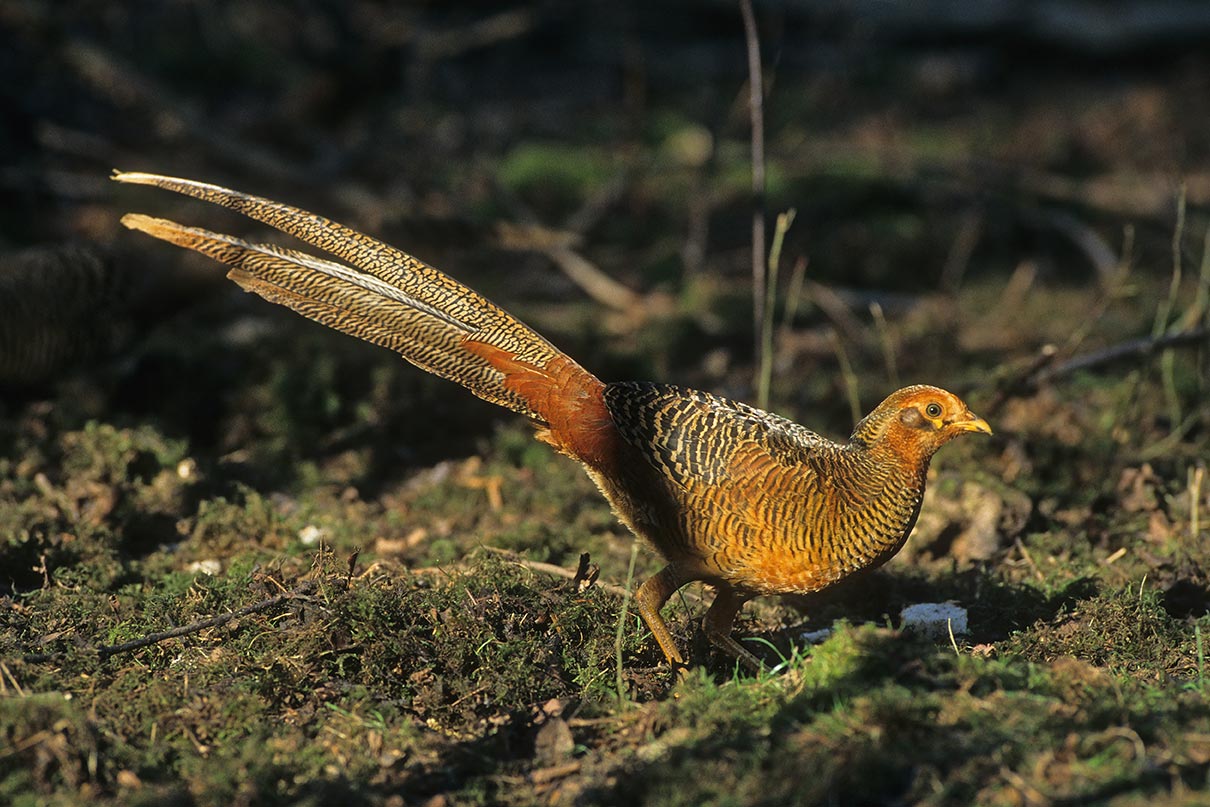
Golden Pheasant (Wayland Wood, Norfolk, February 1997). The very long tail and lack of scaled body plumage immediately confirm that this is not a Common Pheasant, and it must therefore be one of the 'exotic' species. The bright pale brown heavily-barred plumage, yellowy orbital skin around the eye and yellowish legs identify it as a female Golden Pheasant (Robin Chittenden).
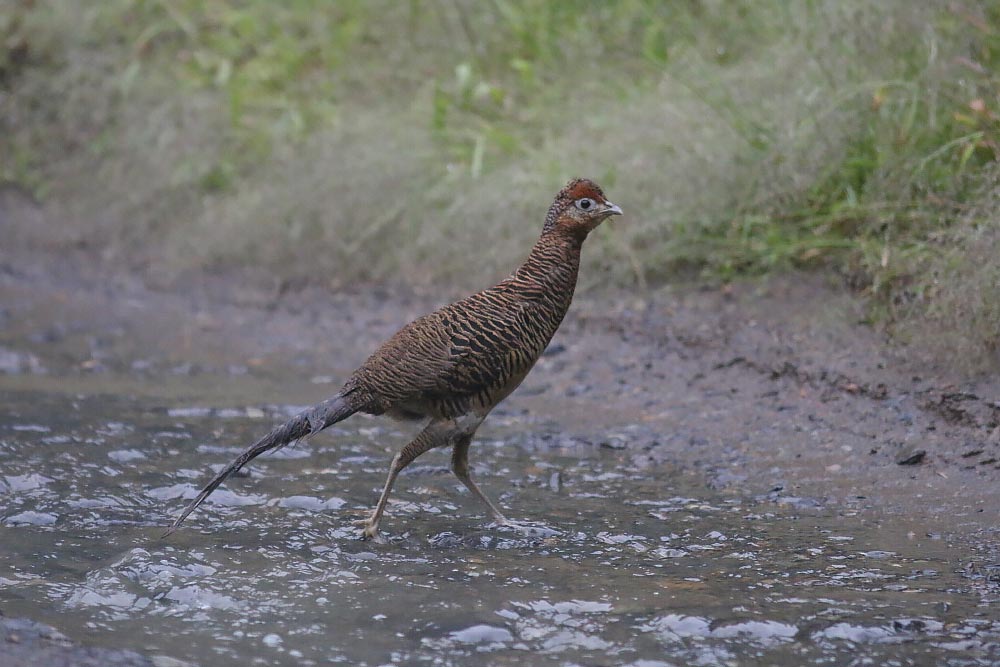
Lady Amherst's Pheasant (Sichuan, China, 24 June 2017). This obviously barred female pheasant is also one of the 'exotics'. It resembles female Golden Pheasant, but it is a darker and richer brown, the orbital skin is grey in colour and the legs are also greyish. These features all identify it as a female Lady Amherst's Pheasant (Summer Wong).
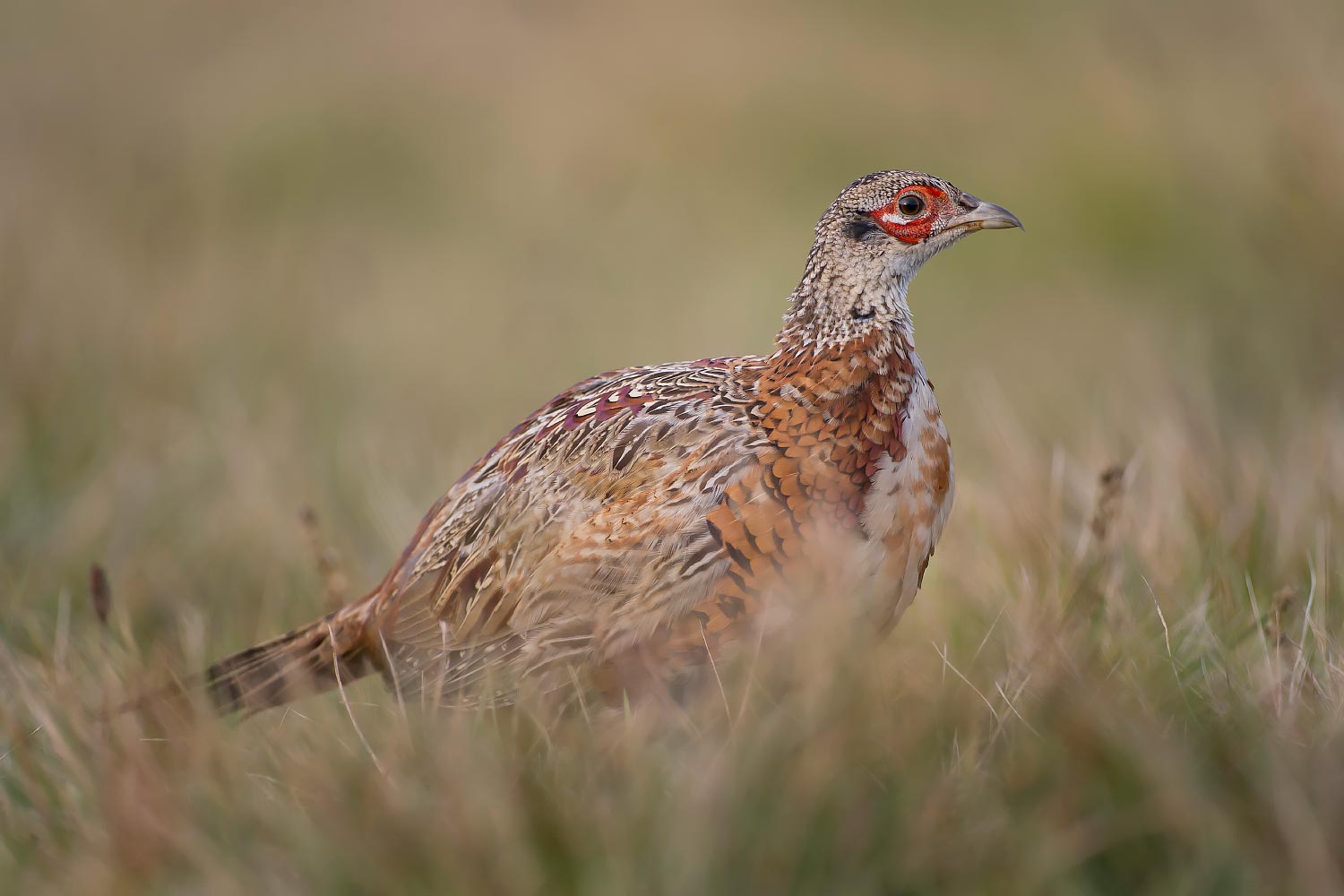
Common Pheasant (Poland, 5 October 2013). This bird, although superficially brown and female-like, is on closer examination a young male. Note in particular the bright coppery-orange hues coming through on the breast and flanks and the bright red skin around the eye (Thomas Harbig).
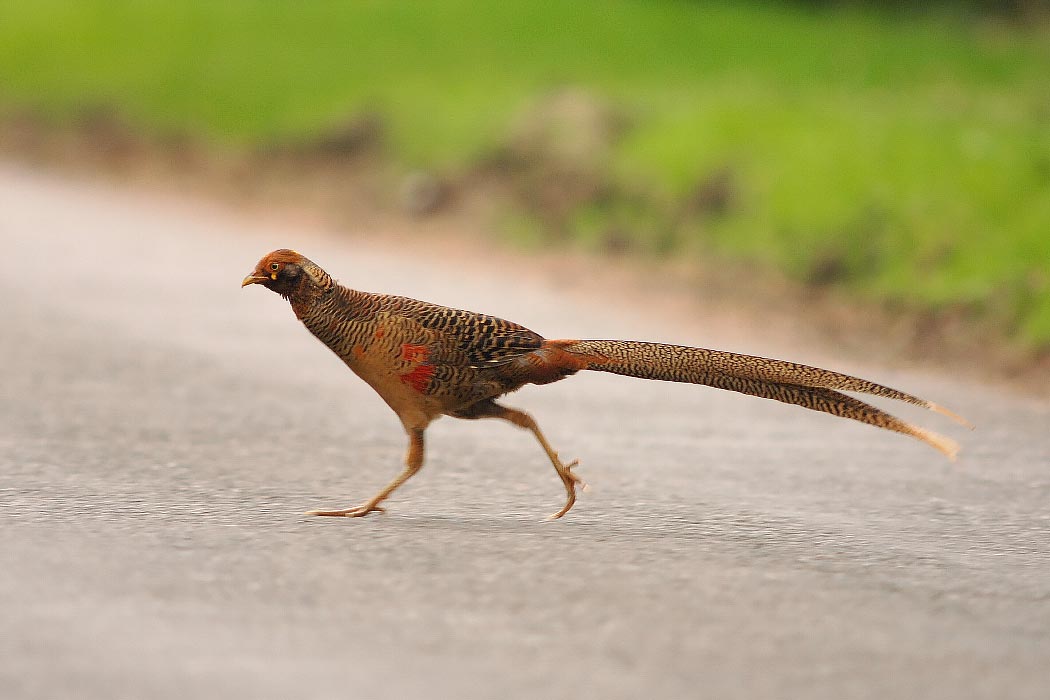
Golden Pheasant (Wolferton, Norfolk, April 2006). The barred plumage and yellowy legs identify this superficially female-like bird as a Golden Pheasant. There are, however, plenty of emerging clues that this is a young male – note the beginnings of the yellow mane and scattered bright red feathers in the flanks (Julian Bhalerao).
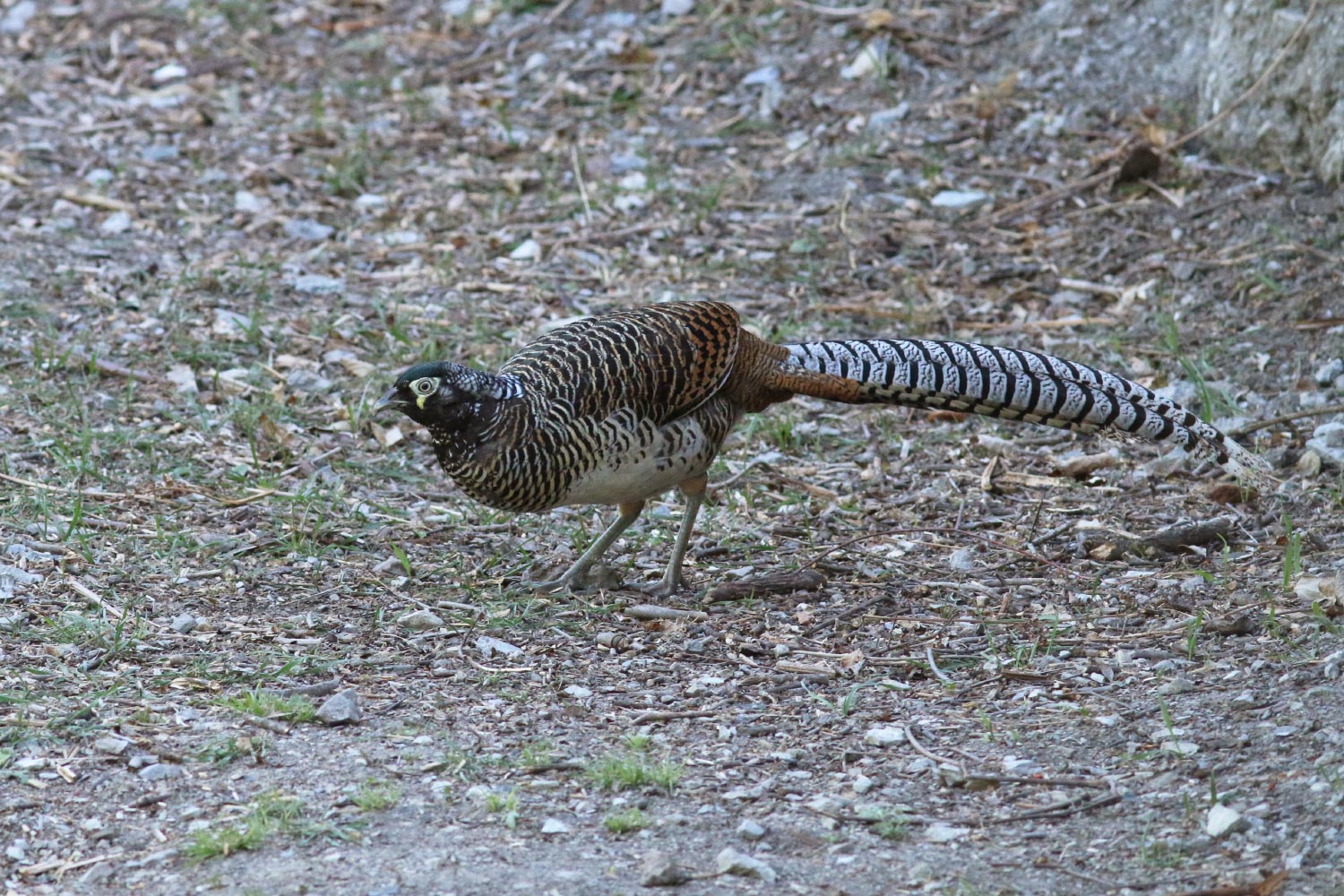
Lady Amherst's Pheasant (Sichuan, China, 16 April 2015). This superficially female-like Lady Amherst's Pheasant (note the grey legs) also shows plenty of emerging young male characters. Most obvious are the strong and contrasting black and white hues in the tail, a developing white belly and new dark feathers with a growing mane on the head (Summer Wong).
No comments:
Post a Comment